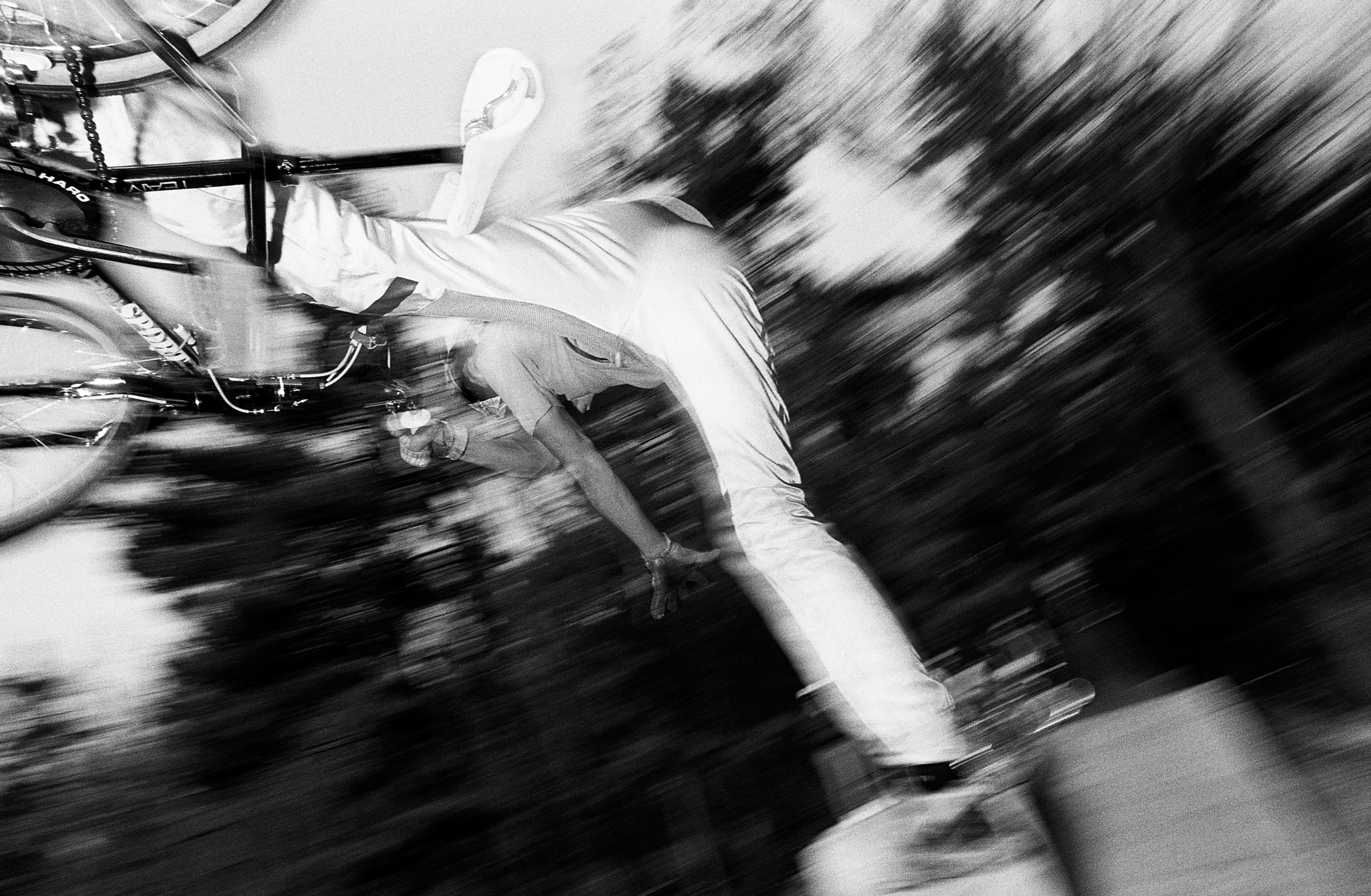FOLLOW THE LEADER
1987 - 1988
The early months of 1987 represented the beginning of a new era for Haro Designs. Following several months of negotiation, the company was purchased by the single largest independent bicycle distribution company in the United States. West Coast Cycle recognized the potential in the BMX Market. Company president, Sid Dinofsky, negotiated a scenario that secured Bob Haro and Jim Ford in long-term leadership positions. The arrival of Mountain Bike Action Magazine Editor; Dean Bradley, in December of 1986 brought new strengths and experience to Haro’s compact management team. Bradley was recruited to lead Haro’s efforts in the mountain bike market. His industry connections and knowledge of the technology served to fast-track the company’s product development program and create immediate credibility.
Haro’s success in the early 1980s presented a series of business challenges that the West Coast acquisition would ultimately solve. The new arrangement brought an established retail distribution network and a dedicated external sales team. Where manufacturing volumes had been carefully managed alongside modest forecasts and projected growth in the early 1980s, the financial muscle of West Coast Cycle enabled Bob Haro and Jim Ford to expand the model line and commit to larger volumes of inventory. The bike range centered around the Haro Master and Sport, although higher specification “Team” models offered the same equipment as Haro’s top riders. The entry-level Haro FST now had a partner in the Haro FSX, and the Haro Response tapped into the European sport of Bicycle Trials riding. Along with the new hardware, Bob Haro recognized the cultural shift happening with the influence of proactive streetwear brands like Vision, Airwalk, and Life’s a Beach. As a result, the 1988 Haro apparel range dropped its traditional leathers and jerseys, turning instead to a more casual clothing line that reflected the lifestyle of the riders.
The rapid rise of the mountain bike in the mid 1980s presented opportunities for the established bicycle company’s to diversify and ride the crest of a new phenomenon. Haro’s Dean Bradley set to work designing a range of new models that could compete alongside market leaders Specialized, Gary Fisher, and rival BMX brand; GT. Bradley overhauled the entire range to feature proprietary geometry, wrap-around Head tube gussets, and chain-stay mounted brakes. The companies flagship model, the Haro Extreme, Bob Haro designed a radical triple-triangle frame design that incorporated a sloping top-tube, that allowed for a shorter head tube and fork-steerer. The range also included two mid level models; the Haro Instinct and Haro Impulse. All of the late 1980s models were produced from 4130 chromoly, and this new approach based around industry-leading design and innovation cemented Haro as an innovative and progressive mountain bike brand.
Rider recruitment continued through the mid-1980s, as the AFA contest circuit welcomed regional affiliates and new talent emerged. The introduction of Ron Wilkerson’s 2hip King of Vert contest series in1986 energized a new direction in the competitive scene based solely on half pipes. In this boom era, it seemed like every town and city in the US had a local hero. Rick Moliterno – a strong all-rounder from Iowa- signed for Haro in September of ’86 following a recommendation from Dennis McCoy. With the addition of Joe and Jeremy Alder - two talented brothers from Baltimore, Maryland; New Jersey flatlander Joe Gruttola, and young vert rider; Eben Krackau from San Antonio, Texas, the 1987 Haro Freestyle Team was, without doubt, the most talented and high profile of any of the factory Freestyle brands. But possibly the most significant arrival on the Haro team came in January of 1988. A prodigious vert rider from Oklahoma named Mat Hoffman left the Skyway Freestyle Team to join Haro’s talented ranks. The marketability of the riders and a relentless, global, touring schedule enabled Haro to maintain its position as the number one brand in BMX Freestyle.











